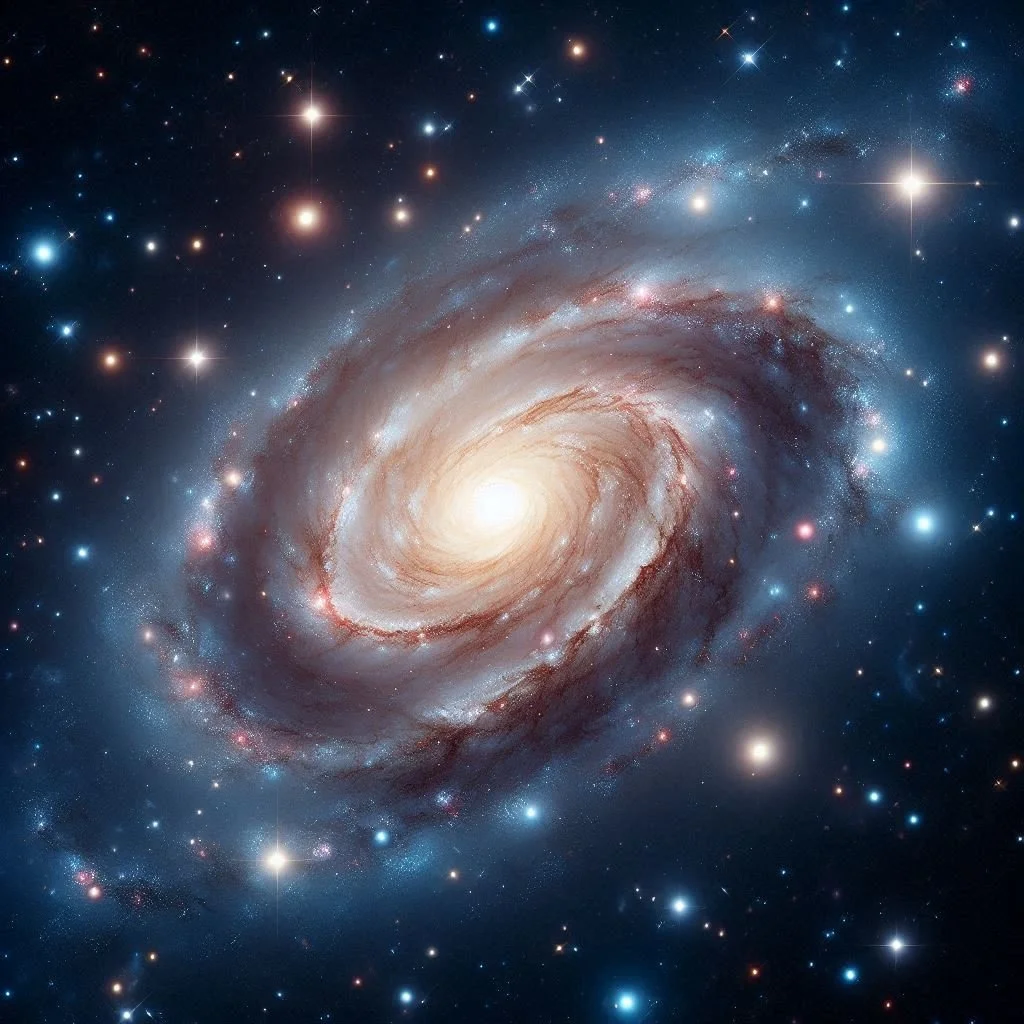
Discovering the Secrets of Bursty Star Formation in Dwarf Galaxies
The study explores how bursty star formation in dwarf galaxies imprints distinct chemical patterns, particularly in magnesium and iron abundances. Using models and APOGEE data from the Sculptor galaxy, researchers identified episodic star formation with quiescent periods of ~300 million years. These findings highlight the potential of chemical abundances to uncover galaxy formation histories and suggest future surveys will refine this understanding.

Mapping the Stars: A Deep Dive into the Kepler Input Catalog
The study refined atmospheric parameters for nearly all 195,478 stars in the Kepler Input Catalog using photometric data and machine-learning techniques. A new 3D dust map improved accuracy in measuring properties like metallicity, temperature, and gravity. The results, validated against independent datasets, enhance our understanding of stellar populations and support exoplanet and astrophysical research, offering a more precise catalog for future studies.

Tracing the Milky Way’s Warp: A New Chemical Clue
The study explores the Milky Way's warp—a twist in its disk—using the chemical composition (metallicity) of over 170,000 stars. Researchers found that the galaxy's north-south metallicity asymmetry mirrors its warp, offering a new tracer to map this structure. Their results align with previous studies of young stars and overcome limitations of traditional methods like star motions.

Exploring the Heart of the Milky Way: A Study of Its Bulge Structure, Kinematics, and Stars
This study explores the Milky Way’s bulge using OGLE, APOGEE, and Gaia data, focusing on its structure, stellar populations, and dynamics. Researchers identified distinct central and inner bulge star groups, with the inner aligning with the Galactic bar and the central showing slower rotation. Chemical analyses revealed differences in star formation histories. A boxy bulge shape was supported over an X-shaped structure, highlighting the bulge's complex evolution from the Galactic disk.

Revealing the Milky Way: Mapping the Stars and Their Movements Using the APOGEE Survey
Khoperskov and collaborators used APOGEE DR17 data and a novel orbit superposition method to map the Milky Way's stellar disc, revealing detailed chemo-kinematic structures. They identified distinct high-α (older, centrally concentrated) and low-α (younger, extended) star populations, supporting an inside-out galaxy formation model. The study highlights a complex disc evolution involving radial migration and an inner-outer disc dichotomy, offering new insights into the Milky Way's history.

Tracing the Origins of the Milky Way's Bulge
Tristan Boin et al. investigate puzzling velocity trends in the Milky Way’s bulge, where metal-rich stars exhibit high velocity dispersion near the midplane, reversing at higher latitudes. Using APOGEE data and N-body simulations, they show that the bulge's bar-like structure traps metal-rich, thin-disk stars more efficiently. This study reinforces the idea that the bulge forms from disk material rather than a classical spheroid.

Exploring Moving Groups in Our Galactic Neighborhood
Liang et al. examined nine moving groups in our solar neighborhood using data from surveys like Gaia and APOGEE. By analyzing the groups’ positions, velocities, chemical properties, and ages, they discovered that these groups often formed from distinct star formation events, showing unique chemical and age profiles compared to surrounding stars. The study suggests that moving groups retain the characteristics of their formation environments, shaped by processes like gravitational effects and gas accumulation, offering valuable insights into the Milky Way’s evolution.

Tracing the Origins of ω Centauri: A Chemical and Orbital Investigation of Globular Clusters
This study explores ω Centauri’s origins by analyzing the chemical compositions and orbits of similar globular clusters, suggesting they may all stem from a common progenitor—an ancient dwarf galaxy disrupted by the Milky Way’s gravitational forces. Using data from the APOGEE catalog and advanced modeling techniques, six clusters were identified with chemical abundances and metallicity distributions closely matching ω Centauri. Their orbital characteristics further support an accretion origin, contributing to the understanding of how interactions with smaller galaxies have shaped the Milky Way.

Unraveling the Galactic Halo: Identifying Components in the Milky Way’s Stellar Halo
Elliot Y. Davies and his team used a method called Non-negative Matrix Factorization (NMF) to separate the Milky Way’s stellar halo into distinct components based on chemical and spatial data. They identified both in-situ (formed within the Milky Way) and accreted (originating from other galaxies) stars, revealing that the inner halo is dominated by in-situ stars, while accreted stars prevail in the outer regions. Unique structures, such as "Eos" and "Aurora," suggest complex interactions between accreted and in-situ material, reflecting the galaxy's intricate formation history. This study sheds light on how the Milky Way evolved through both internal processes and mergers.

Exploring the Milky Way's Proto-Galaxy: A Chemical and Structural Investigation Using APOGEE-Gaia
This study by Horta and Schiavon uses data from the APOGEE and Gaia surveys to investigate the Milky Way's proto-galaxy—its earliest stellar components. By analyzing the chemical compositions and distribution of ancient stars, the authors identify distinct populations, including those from the galaxy's main progenitor and from past mergers like Gaia-Sausage-Enceladus. Using a Plummer model, they estimate the mass of the proto-galaxy to be about 9.1 x 10^8 solar masses, providing insights into the early formation of the Milky Way and its structural evolution.
